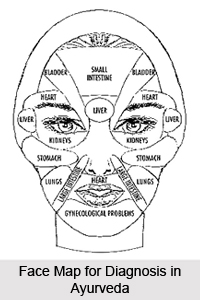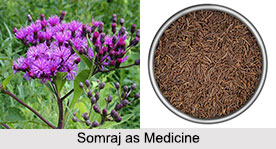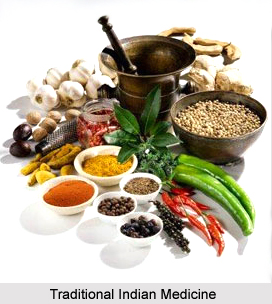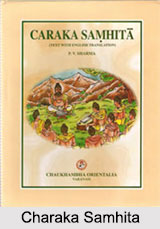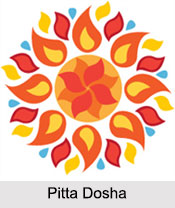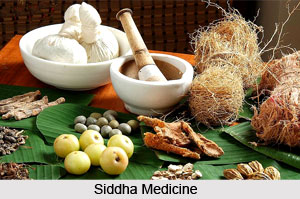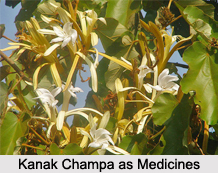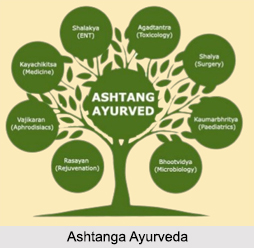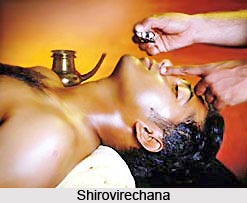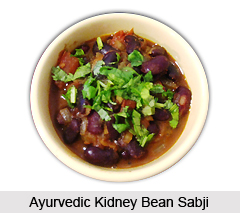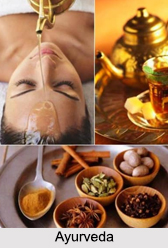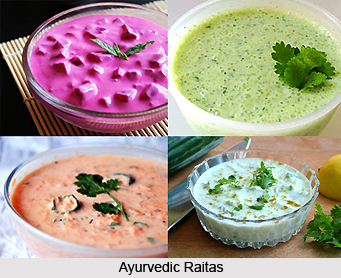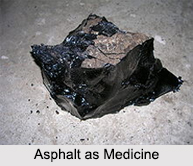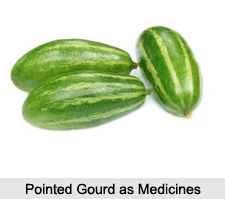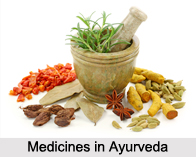 Material objects, according to Sanskrit literature, have 6 sorts of tastes, 20 sorts of qualities, and 2 sorts of forces in them.
Material objects, according to Sanskrit literature, have 6 sorts of tastes, 20 sorts of qualities, and 2 sorts of forces in them.
•The 6 tastes are sweet, acid, salt, bitter, acrid and astringent.
•The 20 qualities of objects are as follows: Heavy, light, soft, dull, oily, consistent, watery, hot, fixed, sharp, tremulous, delicate, demulcent, smooth, harsh, transparent, hard, pungent, coarse and cold.
•The two forces are heating and cooling.
All substances are supposed, after digestion, to assume one or other of three sorts of properties: thus sweets and salts are supposed to be turned after digestion into sweets; acids, into acids; and bitters, acrids and astringents, into acrids. Besides the above properties, each medicine has a special action of its own. It is that quality which shows itself superior to the usual properties of taste, force, and result of assimilation.
Effect of Material Objects on the Human Body
The various notions of medicines on the human system are described in considerable detail. All diseases being supposed to be caused by derangement of the humours, namely, wind, bile, phlegm, blood, etc., all medicines are likewise supposed to have some influence upon one or other of these humours.
Sushruta divides medicines into two classes, with reference to their action on the Humours, namely, Sansamana and Sansodhana.
•Sansamana are medicines which rectify the deranged state of the humours and calm their excited action, without promoting the excretions.
•Sansodhana are medicines which remove collections of bad humours and discharge them by the excretions. The first is subdivided into 3 orders, namely, medicines influencing wind, bile, and phlegm, respectively. The second includes emetics, purgatives, errhines and other depuratories.
Sarangadhara and other writers describe the actions of medicines in further detail and mention the following classes:
1. Dipana are medicines which promote appetite, but do not aid in digesting undigested food.
2. Pachana are medicines which assist in digesting undigested food, but do not increase the appetite. Some medicines have both these properties, that is, they are appetizers as well as digestives.
3. Anulomana are medicines which digest the humours and set them free, that is, promote excretions and favour their discharge.
4. Virechaka or purgatives are described under 3 heads, namely, Sransana, Bhedana and Rechaka. Those medicines which hurry the chyle or materials for digestion, without allowing them to be properly digested, are called Sransana, as for example the pulp of Cassia fistula. Those medicines which set free scybala and other contents of the intestines, and discharge them from the bowels, without producing watery stools, are called Bhedana, as for example Katuki (Pricorrhiza Kurroa). Those medicines which cause the discharge of the digested or undigested contents of the intestines in a liquid form are called Rechaka, as for example, Trivrit (Ipomaea Turpethum). These again are subdivided into 3 orders, namely, mridu or mild, madhyama or intermediate, and krura or drastic.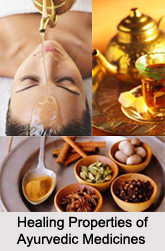
5. Vamana or emetics are medicines which cause emesis of bile, mucus and other contents of the stomach.
6. Chhedana are medicines which remove by force as it were and discharge from the body adherent phlegm or other humours. Emetics, expectorants, errhines, caustics, etc. would probably come under this, head. Black pepper and alkaline ashes are given as examples of this class of medicines.
7. Lekhana or attenuants remove bad humours and altered constituents of the body by thinning them gradually and thus clearing the system of them. Warm water, honey, barley, etc, are examples of this class.
8. Medicines which promote the secretion of perspiration, urine, and milk are called, respectively, Svedana, Mutrala and Stanyajanana.
9. Pramathi are medicines which facilitate the exit of collected secretions from their tubes or receptacles, as for example Vacha (Acorus Calamus).
10. Grahi or inspissants are medicines which from their stomachic, digestive and heating qualities, dry the fluids of the body.
11. Stambhana or constipators are medicines which from their drying, astringent and cooling qualities, and from their easy digestibility, increase the air and retain the secretions, as for example Indrayava (seeds of Holarrhena antidysenterica).
12. Ahkishyandi are substances which from their emollient qualities or heaviness retain the secretions and cause heaviness and fullness of the body, as for example, Dadhi or curdled milk.
13. Rasayana or alternative tonics are medicines which prevent or remove the effects of age, increase the vigour of healthy persons and cure the ailments of the sick.
14. Balya or tonics are medicine which increases strength.
15. Vrinhana are medicines which promote nutrition and increase the bulk of the body.
16. Vajikarana or aphrodisiacs are medicines which increase the sexual powers.
17. Visha or poisons are said to be endowed with the following qualities, namely, Vyavayi, affecting the entire system, as for example, opium and hemp. Sukshma, penetrating into the minutest pores of the body. Vikasi, drying the humours, depressing the system and causing relaxation of the joints, as for example betel-nuts. Agneya, heating or stimulant. Madavaha, depriving men of their senses and enveloping their minds in darkness as spirituous liquors. Taken in large doses, poisons destroy life, but, judiciously used, they act as curatives and restore health, even in dangerous diseases.
9 active or virulent poisons are mentioned by most writers, namely vatsanabha, haridra, saktu, pradipana, saurashtrika, sringi, kalakuta, halahala and brahmaputra. Most of them are apparently varieties of aconite. The following 7 drugs are described, as minor poisons, viz., opium, gunja (seeds of Abrus precatorius), datura, roots of Nerium odorum (karavira), and Gloriosa superbalanguli and the milky juices of Calotropis gigantea (arka) and Euphorbia neriifolia (snuhi). The mineral poisons mentioned in Sushruta are phenasma bhasma or white arsenic, and Haritala or orpiment. Of animal poisons, the poison of the serpent is the only one used in medicine.
Related Articles
Ayurveda
History of Ayurveda
Origin of Ayurveda
Ayurveda Medication
Principles Of Ayurveda
Elements of Ayurveda
Concepts of Ayurveda
Branches of Ayurveda
Sushruta Samhita
Sushruta






